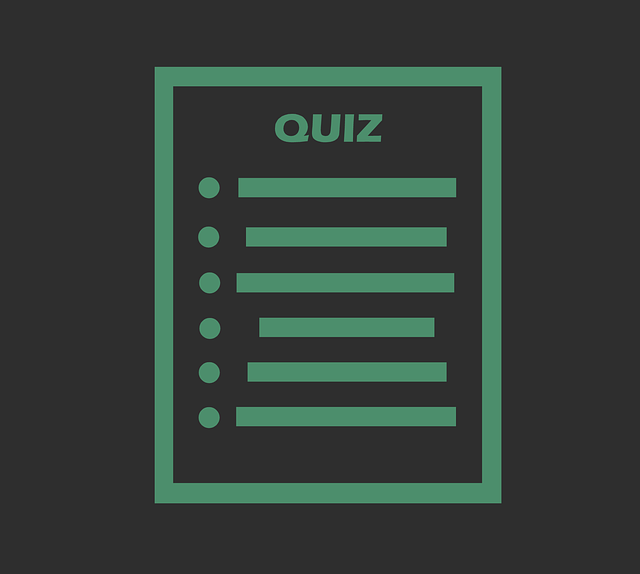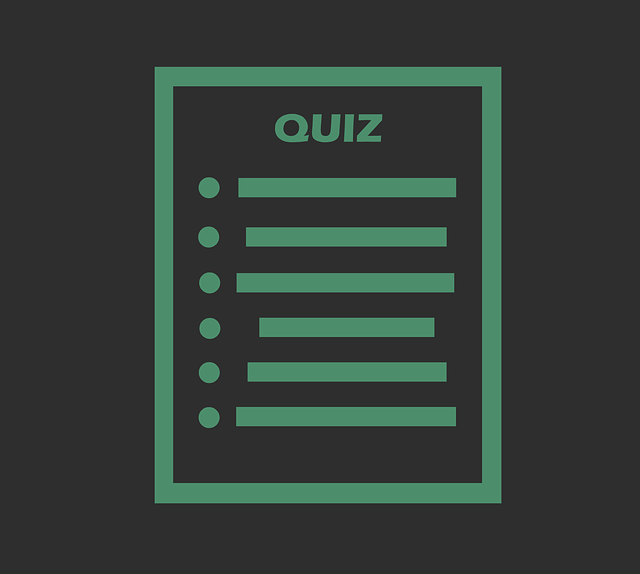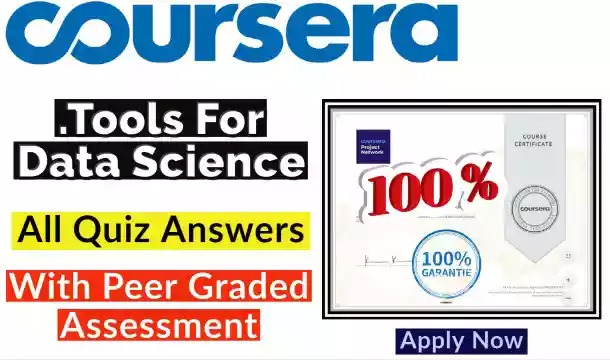In this blog you will find the correct answer of the Coursera quiz Six Sigma and the Organization Advanced Coursera Answers mixsaver always try to brings best blogs and best coupon codes
Week- 1
Organizational Goals Graded Quiz
1.
Question 1
A process that is considered best in class will
operate at 6 sigma
1 point
- False
- True
2.
Question 2
Deming believed that organizations should move
away from numerical quotas and numerical goals for management.
1 point
- True
- False
3.
Question 3
The original Six Sigma methodology consisted of
all phases except
1 point
- Measure
- Analyze
- Control
- Define
4.
Question 4
Cost reduction projects can result in all except
1 point
- Lower product lifetime
- Customer defections
- Pleased customers
- Lower reliability
5.
Question 5
In the control phase of DMAIC, our prime
objective is to
1 point
- Develop the solution
- Implement the solution
- Ensure the problem stays fixed
- Close the project
6.
Question 6
Six sigma can reduce the number of botched
surgical procedures from 5000 every week to
1 point
- 1.7 botched procedures every month
- 3.4 botched procedures every week
- 833 botched procedures every week
- 1.7 botched procedures every week
7.
Question 7
Before analyzing and improving a process, we
must first ensure
1 point
- The process is stable
- Management knows what we are doing
- We know how much money we will save
- Who is responsible for the issue
8.
Question 8
The father of quality engineering is
1 point
- There is no father of quality engineering
- Deming
- Juran
- Taguchi
9.
Question 9
The six sigma methodology was first advanced by
1 point
- Harry and Lloyd
- Siegel and Shuster
- Harry and Smith
- Simon and Garfunkel
10.
Question 10
An important step in developing a process flow
is
1 point
- Walking the process
- Creating a work instruction
- Making the scope as inclusive as possible
- Creating the perfect flowchart the first time
Week- 2
Lean Principles in the Organization – Graded
1.
Question 1
After WWII, Japanese manufacturers develop their
philosophy, drawing on the ideas of Deming, Juran, and Henry Ford.
1 point
False
True
2.
Question 2
Lean is a collection of tools, from which you
can pick and choose the ones you like.
1 point
True
False
3.
Question 3
When documenting the value stream, what are the
boundaries?
1 point
From the receiving dock to the shipping dock
It may vary depending on the company
From suppliers’ suppliers to customers’ customers
From direct suppliers to direct customers
4.
Question 4
Large batch sizes are generally more efficient.
1 point
True
False
5.
Question 5
Gembas refers to:
1 point
The Real Place
Policy Deployment
Work Leveling
Autonimation
6.
Question 6
In a Lean system, any employee has the authority
to stop production if a quality problem is seen
1 point
True
False
7.
Question 7
When applying Theory of Constraints, the most
important thing is managing the bottleneck.
1 point
False
True
8.
Question 8
Which of the following is a tool for workplace
organization
1 point
5S
TPM
Andon
SMED
9.
Question 9
Which of the following enables an organization
to quickly change from one part number to another?
1 point
5S
Andon
TPM
SMED
10.
Question 10
If a process has availability of 0.95,
performance of 0.96, and quality of 0.94, what is the OEE (Overall Equipment
Effectiveness)?
1 point
0.96
0.94
0.95
0.86
Week- 3
Design for Six Sigma Graded Quiz
1.
Question 1
The RPN is the product of
1 point
Whatever method the team deems necessary
Savings, Occurrence, Detection
Severity, VOC, Detection
Severity, Occurrence, and Detection
2.
Question 2
An FMEA is used to establish priorities
1 point
True
False
3.
Question 3
The benefits of DFSS include the following except
1 point
Enhanced quality and reliability
Improved product fit
Increased robustness of product performance
Management thinks that the process saves money
4.
Question 4
When two risks have the same RPN, the tie is
broken by the
1 point
Highest severity
Highest Occurrence
Project leader
Team consensus
5.
Question 5
The knowledge based approach is driven by the
company’s aim for
1 point
Profit
Competitive advantage
Design for excellence
Solving problems
6.
Question 6
A challenge of DFSS is
1 point
Innovativeness
Determining which metrics to evaluate the deployment against
Buy in
Resources
7.
Question 7
FMEA is just a numbers game. It is easy to
minimize the RPN
1 point
False
True
8.
Question 8
DMADV and DMAIC share the phases below except
1 point
Analyze
Define
Measure
Design
9.
Question 9
The main differences between DFSS and Six Sigma
all of below except
1 point
DFSS is more (customer) reactive
DFSS starts earlier
DFSS applies to new products
DFSS focuses on marketing
10.
Question 10
The reasons for using DFSS include all of below except
1 point
Inadequate market analysis
Cost reduction projects
Increase success rate of new products
Minimizes waste of resources
Week- 4
Project Identification Graded Quiz
1.
Question 1
A disadvantage of benchmarking is all except
1 point
Incomplete
Costly
Increases knowledge
Can be misleading
2.
Question 2
A stakeholder analysis helps
identify and abate resistance
1 point
True
False
3.
Question 3
One tip in process mapping includes
1 point
Never refining the process
Validating your steps
Making sure the process map is 100% complete
Mapping the process by yourself and in a cool dry room
4.
Question 4
The different types of benchmarking includes all
the following except
1 point
Performance
Process
Strategic
Park
5.
Question 5
When identifying stakeholders, remember that
1 point
They are always correct
Quality is defined by the customer
Quality is achieved through detection
We must do as they say
6.
Question 6
Project selection suggests that projects with the
highest financial benefit will always
get priority
1 point
True
False
7.
Question 7
An advantage of benchmarking includes all of the
following except
1 point
Facilitates comparisons
Makes it easy to adopt best practices
Increases knowledge
Drives continuous improvement
8.
Question 8
One of the questions we should ask ourselves
when defining a process is how to measure the process
1 point
False
True
9.
Question 9
In a SIPOC, the customer and supplier can never
be the same entity
1 point
False
True
10.
Question 10
A typical benchmarking process would include all
of the following except
1 point
Distributing the data to all competitors in the industry
Re-calibrating and starting over again
Deciding what to benchmark
Obtaining data and collecting information
Voice of the Customer Graded Quiz
1.
Question 1
External customers are members of the
organization
1 point
True
False
2.
Question 2
The steps for developing CTS’s include all except
1 point
Measuring the parameter ahead of time
Establish quantifiable targets
Follow up with customers
Cultivate VOC data
3.
Question 3
A QFD is a comparative assessment of the
1 point
What’s and How’s
What’s and Who’s
Who’s and How’s
Why’s and What’s
4.
Question 4
Which
is certainly true about Critical to Satisfactions (CTS’s)?
1 point
CTS’s is like putting an aquarium in a lobby, nice to look at but does not benefit the customer
CTS’s are the basic elements used in driving process measure, improvement and control
CTS’s are typically an inefficient exercise that serves no useful purpose
CTS’s do not allow you to focus on any quality improvement
5.
Question 5
There is only one type of critical to satisfaction measure
1 point
True
False
6.
Question 6
An important point for listening to the customer
includes all except
1 point
Individuals at higher levels in the organization are less informed
Share your results
Engage your customers
Injecting your personal perceptions into the
data
7.
Question 7
When exploring the What’s on a QFD, we must also
include:
1 point
The customers assessment of the how the competitors meet these customer requirements
Our assessment of the how the competitors meet these customer requirements
The customers assessment of the how the competitors meet our requirements
Our assessment of the how the competitors meet our requirements
8.
Question 8
It is critical to ensure that our selected CTS’s
align with what is important to the customer
1 point
False
True
9.
Question 9
A QFD converts customer requirements into
multiple levels of
1 point
Internal requirements
Productivity
Competitor requirements
External requirements
10.
Question 10
Critical aspects to our design, process or
product can be traced to how well we serve our customer, satisfy needs, and ________
1 point
Sell product
Make profit
Delight
Compete
Project Management Basics Graded Quiz
1.
Question 1
Project charter benefits include all the
following except
1 point
Linked to company metrics
Will create a value or advantage for the business
Makes the boss happy
Improve customer satisfaction
2.
Question 2
The elements of a project charter include all
the following except
1 point
Results
Problem statement
Post mortem
Scope
3.
Question 3
The project closure is primarily a negotiation
and must be carefully approached
1 point
False
True
4.
Question 4
One effective means of project documentation is
1 point
Writing the steps on the machine for the operator
Maintaining a notebook
Blogging
Story-Boarding
5.
Question 5
Project Charter results should
1 point
Only benefit the company
Have the maximum profit
Be specific
Be based only on what the team observes
6.
Question 6
Effective project planning skills include all
the following skills except
1 point
Securing commitments
Communication
Gaining buy in
Facilitating top management involvement
7.
Question 7
Some important points of project risk analysis
include all the following except
1 point
Performed during planning stage
Minimizes miscommunications
Is periodically updated
Contains representation across the organization
8.
Question 8
Facilitating top management involvement includes
the following ideals except
1 point
A vested interest motivates the removal of barriers
Political favors
Identifying key management resources
Gaining buy-in
9.
Question 9
Incremental and modular planning allows us to
stay on time and under budget
1 point
True
False
10.
Question 10
When securing resources for your team we should
1 point
Seek SME’s across the organization
Only pick people who are doers
Only pick people who are leaders
Recruit friends
Week- 5
Graded Quiz
1.
Question 1
Under the Kano Model, performance attributes are
stable over time.
1 point
True
False
2.
Question 2
In the Kano Model, basic requirements are the
ones that customers take for granted.
1 point
True
False
3.
Question 3
The best way to identify customer wants and
needs is to ask your customers and potential customers.
1 point
True
False
4.
Question 4
Which of the following types of attributes are
specifically identified by customers as wants and needs.
1 point
Performance
Basic
Delighters
All of the above
5.
Question 5
Benchmarking is simply comparing performance
measures with high performing organizations.
1 point
True
False
6.
Question 6
Which of the following identifies relationships
and their strength?
1 point
Gantt Chart
Interrelationship diagraph
Matrix diagram
Process decision program chart
7.
Question 7
Which of the following tools would be the best
choice to manage and monitor the progress of a project?
1 point
Interrelationship diagraph
Process decision program chart
Gantt Chart
Matrix diagram
8.
Question 8
Process Capability allows us to compare
variation in the process, with process specifications.
1 point
True
False
9.
Question 9
A primary feature of a reactive problem solving
model such as 8D is the inclusion of a containment step.
1 point
True
False
10.
Question 10
In a normal distribution, what percentage of the
values would you expect to find between minus 2 standard deviations and plus 2
standard deviations?
1 point
99.73%
68%
95.5%
100%
Important Links:
- Advanced Algorithms and Complexity Coursera Week 1 Quiz
- Business Analytics for Decision Making Coursera Week 1 Quiz
- Epidemiology: Successful Career Development Coursera Week 1
- How Things Work: An Introduction to Physics week 1
- Introduction to Public Speaking Coursera week 1 Quiz





